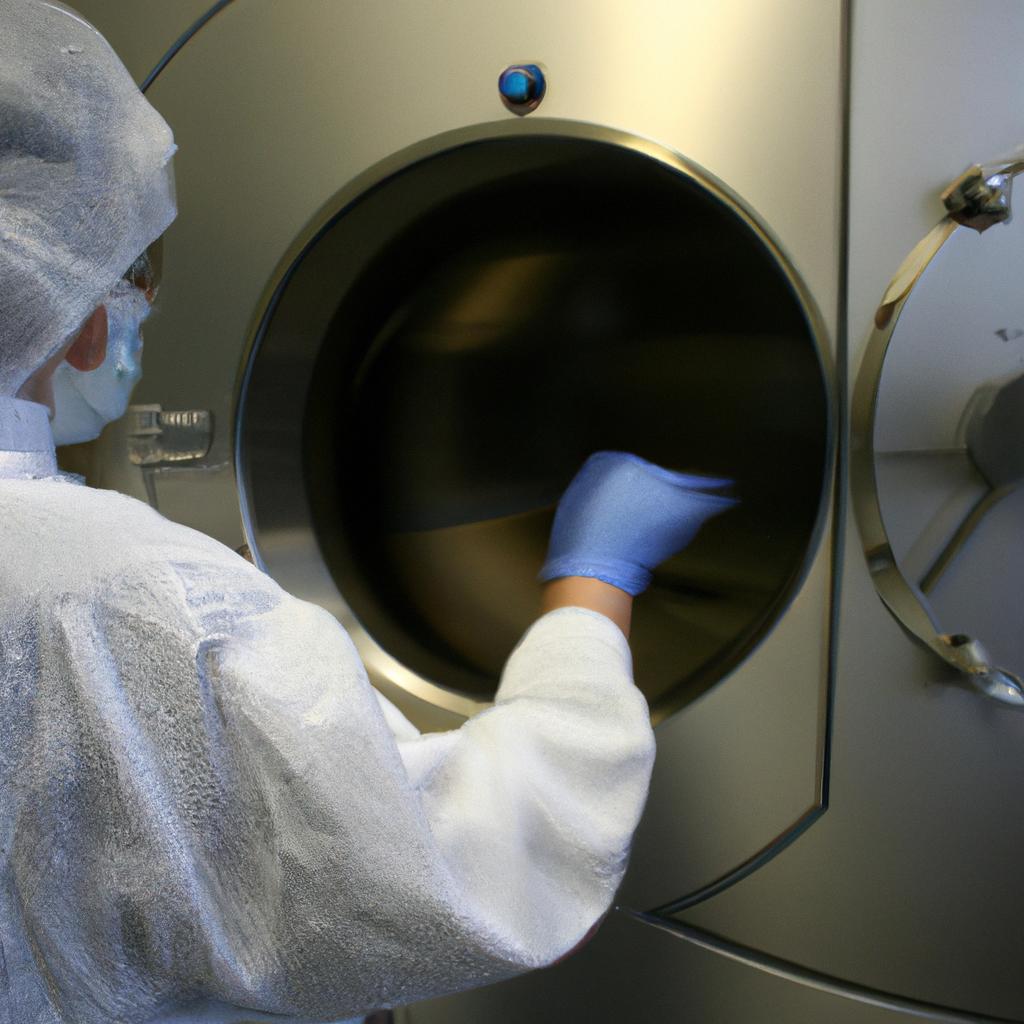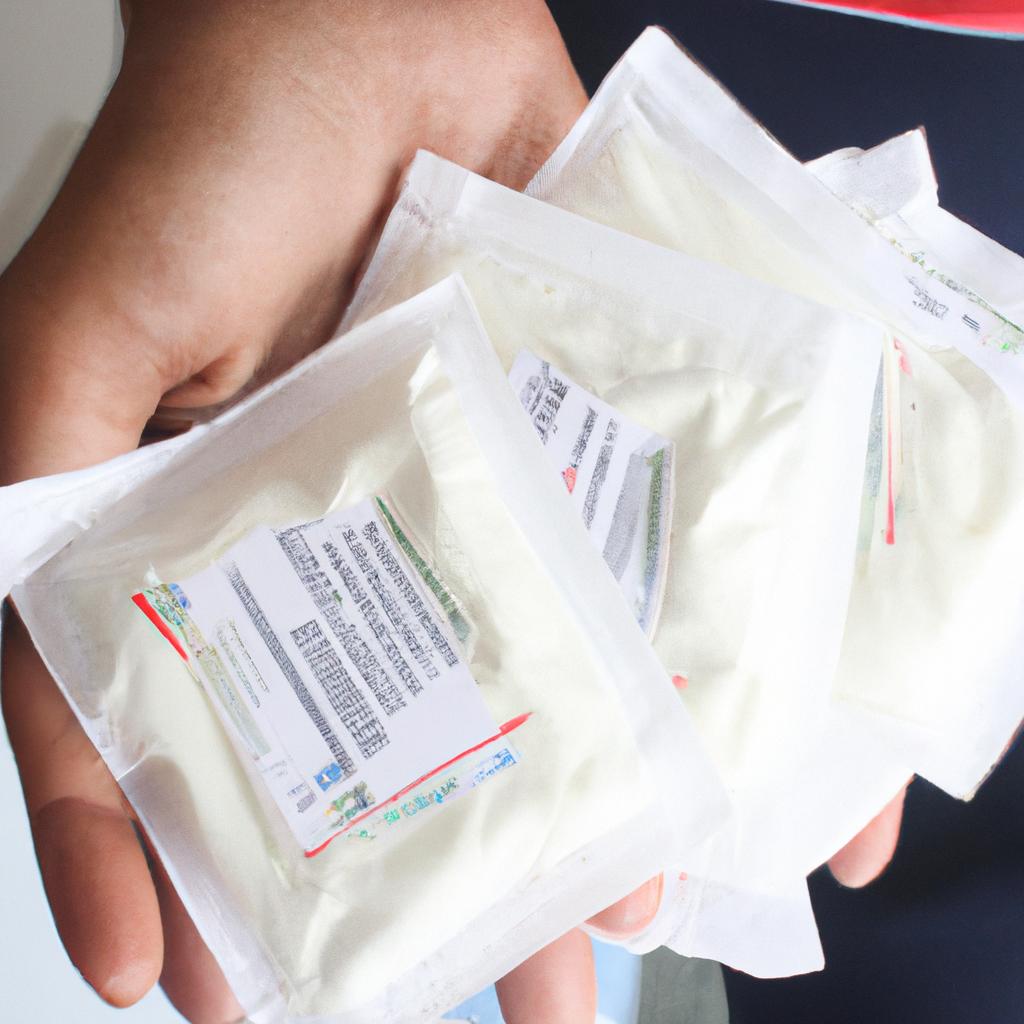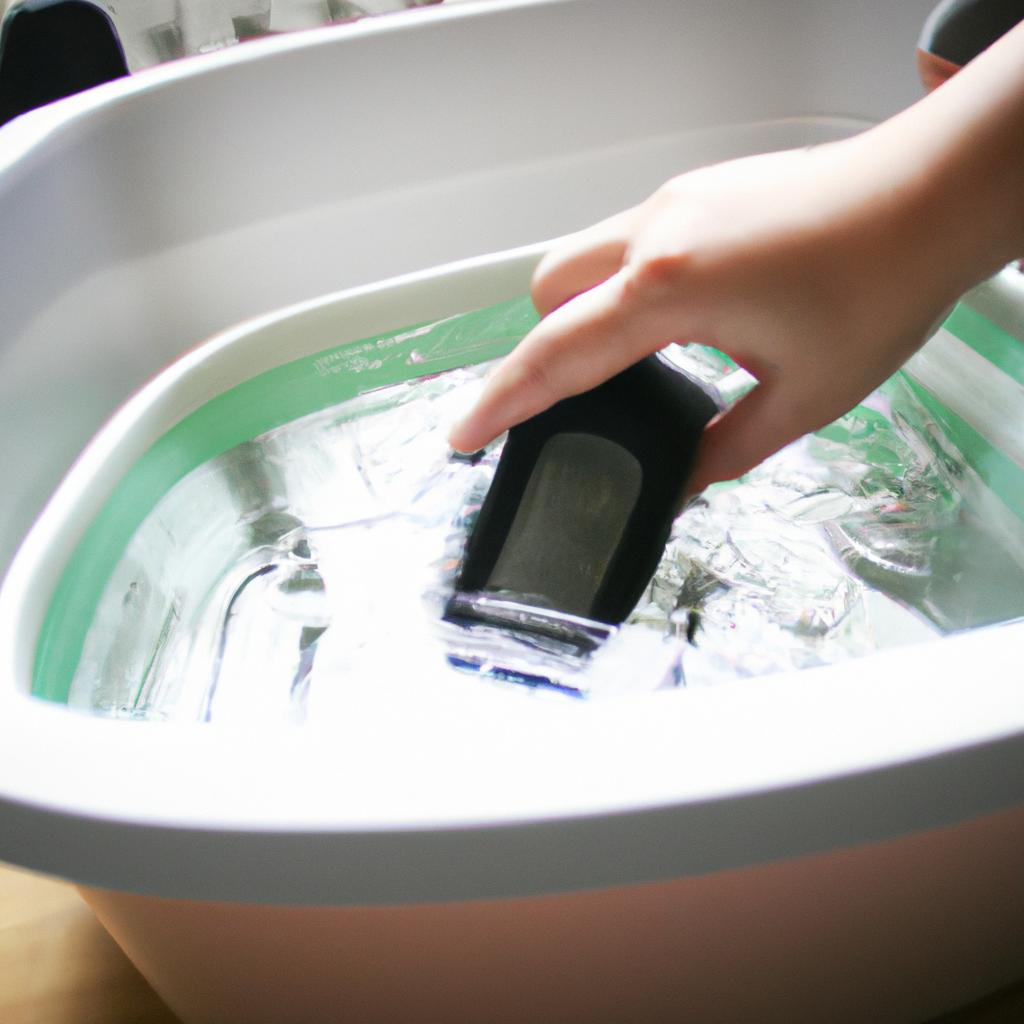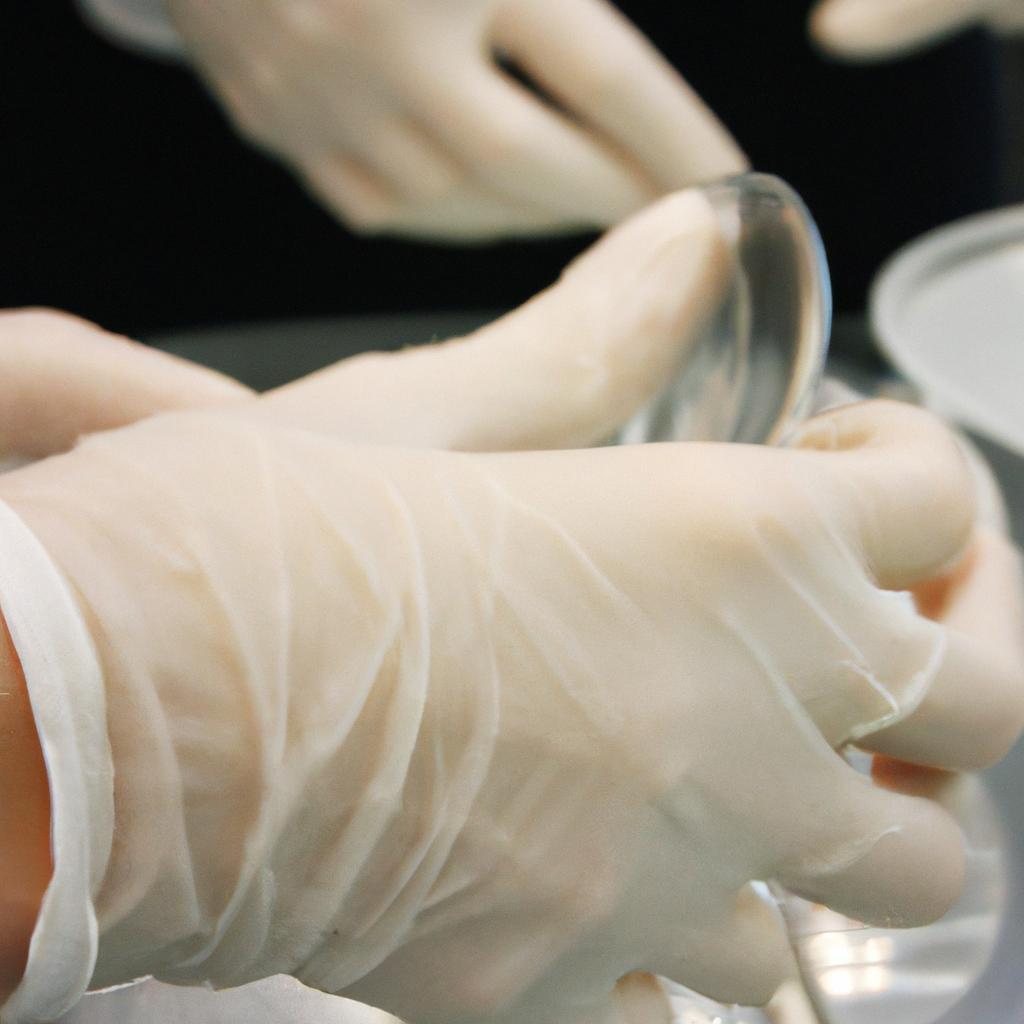Autoclaves have long been recognized as essential tools in ensuring effective cleaning and sterilization of instruments and supplies. These devices employ a combination of heat, pressure, and steam to eliminate microorganisms that may pose a risk of infection or contamination. For instance, imagine a scenario where surgical instruments are inadequately cleaned before being used on a patient. This negligence could potentially lead to the transmission of harmful pathogens, resulting in severe complications or even death. Therefore, it is crucial to understand the principles behind autoclave operation and their significance in maintaining rigorous standards of cleanliness within medical facilities.
In healthcare settings, preventing the spread of infections is paramount for safeguarding patients’ well-being. Autoclaves play an integral role in achieving this objective by effectively eliminating microorganisms from reusable items such as surgical instruments and laboratory equipment. By utilizing high-pressure saturated steam at temperatures above 121 degrees Celsius (250 degrees Fahrenheit), autoclaves can destroy bacteria, viruses, fungi, and spores that might otherwise persist after conventional cleaning methods. Consequently, these devices contribute significantly to reducing the risk of nosocomial infections – those acquired during a hospital stay – thereby enhancing patient safety and improving overall healthcare outcomes.
While the importance of autoclaves cannot be overstated, their proper use and maintenance are equally crucial. It is essential to follow manufacturer guidelines and best practices when operating autoclaves to ensure optimal sterilization outcomes. This includes proper loading of instruments, using appropriate packaging materials, and selecting the correct cycle parameters based on the items being sterilized.
Regular maintenance and validation of autoclave performance are also vital. This involves routine cleaning, calibration, and testing to verify that the device is functioning properly and consistently achieving the desired sterilization results. Additionally, monitoring indicators such as biological or chemical indicators can provide further assurance of effective sterilization.
In summary, autoclaves are indispensable tools in healthcare settings for ensuring cleanliness and preventing infections. By employing heat, pressure, and steam, they effectively eliminate microorganisms from reusable items. However, it is essential to adhere to proper usage guidelines and perform regular maintenance to maximize their effectiveness and maintain a safe environment for patients.
Understanding Autoclaves: A Brief Overview
Imagine a hospital where surgical instruments are not properly cleaned and sterilized before use. In one particular case, a patient undergoing surgery developed a serious infection due to contaminated equipment. This scenario highlights the critical role of autoclaves in ensuring effective cleaning and sterilization of instruments and supplies.
Autoclaves are specialized devices used in healthcare facilities, laboratories, and other settings to kill microorganisms through exposure to high-pressure steam. They play a vital role in reducing the risk of infections associated with medical procedures by eliminating pathogens that could potentially contaminate instruments or supplies.
To fully grasp the significance of autoclaves, it is essential to understand their key features and operating principles. Firstly, autoclaves utilize pressurized steam at temperatures typically ranging from 121-134 degrees Celsius (250-273 degrees Fahrenheit). The combination of heat and moisture effectively destroys bacteria, viruses, fungi, and spores that may be present on surfaces or within crevices of instruments or supplies.
Secondly, autoclaves rely on precise time intervals for adequate sterilization. Exposure durations can vary depending on factors such as load size and type, but generally range from 15-30 minutes once the desired temperature has been reached. It is crucial to maintain these parameters consistently throughout the process to ensure optimal microbial destruction.
Lastly, autoclave cycles typically involve three phases: heating/pressurizing phase, holding phase (where sterilization occurs), and cooling/depressurizing phase. Each phase serves a distinct purpose in achieving thorough cleaning and sterilization while also preventing damage to delicate instruments or supplies.
Considering the importance of proper cleaning and sterilization practices in healthcare settings, it becomes evident why autoclaves are indispensable tools. To emphasize this point further:
- Autoclaving significantly reduces the risk of healthcare-associated infections.
- Properly functioning autoclaves provide reliable results in terms of sterility assurance.
- Autoclaving promotes patient safety by ensuring the use of clean and sterile instruments.
- Compliance with autoclave protocols is crucial for maintaining regulatory standards.
Table: Key Features of Autoclaves
| Feature | Description |
|---|---|
| High-pressure steam | Destroys bacteria, viruses, fungi, and spores that may be present on surfaces or within crevices. |
| Precise time intervals | Ensures adequate sterilization through consistent exposure durations based on load size and type. |
| Three-phase cycle | Heating/pressurizing phase, holding phase (sterilization), and cooling/depressurizing phase achieve thorough cleaning while preventing damage to delicate items. |
In summary, understanding autoclaves’ fundamental principles and features is essential to appreciate their role in effective instrument and supply cleaning and sterilization. The next section will delve into the importance of proper autoclave operation, further emphasizing the significance of following established protocols to maintain optimal results.
The Importance of Proper Autoclave Operation
Understanding the proper operation of autoclaves is crucial for ensuring effective cleaning and sterilization of instruments and supplies. By following specific guidelines, healthcare facilities can maintain a safe environment for patients and staff alike. Let’s explore some key considerations in this process.
Imagine a scenario where a dental clinic fails to operate its autoclave properly. As a result, contaminated instruments are inadvertently used on patients, leading to potential infections. This case study highlights the importance of adhering to established protocols when utilizing autoclaves in healthcare settings.
To ensure optimal performance and safety, here are several key factors that must be considered during the operation of an autoclave:
-
Load Placement: Proper arrangement of instruments inside the chamber is essential for efficient heat transfer and thorough sterilization. Placing items too close together or blocking steam circulation can compromise effectiveness.
-
Cycle Selection: Autoclaves offer different cycle options based on instrument types, load sizes, and desired outcomes. Selecting the appropriate cycle ensures that all microorganisms are effectively eliminated without causing damage to delicate instruments or materials.
-
Monitoring Parameters: Continuous monitoring of critical parameters such as temperature, pressure, and exposure time is necessary to validate successful sterilization cycles. Regular maintenance and calibration of autoclave equipment also contribute to reliable performance.
-
Post-Cycle Handling: After completing a sterilization cycle, it is important to handle sterile items carefully to prevent recontamination by touching non-sterile surfaces or using improper storage techniques.
- Peace of mind knowing that every surgical instrument has undergone rigorous sterilization.
- Increased patient trust in the facility’s commitment to infection control measures.
- Reduction in cross-contamination risks among patients and healthcare providers.
- Enhanced overall quality assurance practices within the healthcare setting.
Now let’s visualize an emotionally resonant table regarding the benefits of proper autoclave operation:
| Benefit | Description |
|---|---|
| Enhanced Patient Safety | Proper autoclave operation ensures the absence of harmful microorganisms, reducing the risk of healthcare-associated infections. |
| Regulatory Compliance | Adhering to established protocols demonstrates compliance with infection control standards and regulatory requirements. |
| Long-Term Cost Savings | Effective sterilization reduces the need for instrument replacement due to damage or contamination, saving resources in the long run. |
| Preservation of Reputation | Consistent adherence to proper autoclave practices helps maintain a positive reputation within the healthcare community. |
In summary, understanding and implementing appropriate procedures when operating an autoclave is vital for maintaining patient safety and preventing infections. By considering load placement, cycle selection, monitoring parameters, and post-cycle handling, healthcare facilities can ensure effective cleaning and sterilization.
With a solid foundation on proper autoclave operation established, let us now explore the different types of autoclaves available and how they are utilized in various settings.”
Different Types of Autoclaves and Their Uses
Transitioning from the previous section, where we discussed the importance of proper autoclave operation, let us now explore the different types of autoclaves and their uses. To illustrate this, consider a situation in which a hospital is equipped with three autoclaves: one for surgical instruments, another for laboratory supplies, and a third for general use. Each autoclave serves distinct purposes, ensuring that specific items are properly cleaned and sterilized.
The first type of autoclave commonly found in healthcare settings is designed specifically for surgical instruments. These autoclaves have larger chambers to accommodate various sizes of surgical tools such as scalpels, forceps, and clamps. They operate at higher temperatures and pressures compared to other types of autoclaves due to the need for thorough sterilization required by these critical instruments.
In contrast, laboratory supplies often require gentler treatment during the cleaning process. Autoclaves used for laboratory equipment operate at lower temperatures but still maintain sufficient pressure levels to ensure effective sterilization. This allows delicate glassware and other scientific apparatus to be safely disinfected without compromising their structural integrity or accuracy.
Lastly, there are general-use autoclaves that can handle a wide range of items such as towels, linens, rubber gloves, and plastic containers. These versatile machines typically have medium-sized chambers and offer customizable cycles depending on the load being processed. Some may even come equipped with multiple tray arrangements or racks to maximize space utilization.
To further emphasize the significance of choosing the appropriate type of autoclave based on intended usage, here is a bullet point list highlighting key considerations:
- Autoclave size should align with the volume and dimensions of items requiring sterilization.
- Operating temperature must be suitable for the materials being treated.
- Pressure levels need to meet industry standards to ensure proper disinfection.
- Cycle duration should be optimized to balance efficiency and effectiveness.
Additionally, it is worth noting that each type of autoclave may have specific maintenance requirements to ensure optimum performance and longevity. This can include routine inspections, calibration checks, and periodic cleaning procedures.
In the subsequent section about “Key Factors for Effective Autoclave Cleaning,” we will delve into the crucial aspects that contribute to achieving successful sterilization outcomes without compromising instrument integrity or patient safety.
Key Factors for Effective Autoclave Cleaning
Building on our understanding of different types of autoclaves and their uses, it is essential to explore key factors for effective autoclave cleaning. To illustrate the importance of proper cleaning practices, let’s consider a hypothetical scenario where an autoclave was not thoroughly cleaned between cycles.
Imagine a hospital laboratory that utilizes an autoclave to sterilize surgical instruments. Due to time constraints, one set of contaminated instruments was placed in the autoclave immediately after another cycle without proper cleaning. As a result, traces of organic material remained on the surfaces, impeding the effectiveness of subsequent sterilization attempts.
To prevent such scenarios and ensure optimal performance, several critical factors must be considered when cleaning an autoclave:
-
Regular Maintenance:
- Schedule routine maintenance sessions to inspect and clean all components.
- Check seals, gaskets, and filters regularly for wear or damage.
- Clean any build-up from drainage systems and ventilation openings.
-
Thorough Cleaning:
- Remove all visible debris from instrument trays before placing them in the autoclave.
- Use appropriate cleaning agents recommended by manufacturers.
- Pay special attention to hard-to-reach areas where contaminants may accumulate.
-
Proper Drying:
- Ensure thorough drying post-cleaning to avoid moisture-related issues like mold growth.
- Allow sufficient time for complete drying before using the autoclave again.
-
Validation and Documentation:
- Establish protocols to validate cleanliness through visual inspections or testing methods.
- Maintain comprehensive records detailing each cleaning session for future reference.
Table 1: Common Autoclave Cleaning Agents
| Agent | Effectiveness | Safety |
|---|---|---|
| Chlorine-based | Highly effective | Handle with caution |
| Citric acid | Effective | Safe to use |
| Enzymatic | Moderate | Avoid contact |
In summary, ensuring effective autoclave cleaning is essential for maintaining sterilization efficacy. Regular maintenance, thorough cleaning practices, proper drying techniques, and diligent documentation are all crucial aspects to consider. By adhering to these guidelines, healthcare facilities can minimize the risk of cross-contamination and maintain a safe environment.
With a solid understanding of key factors related to autoclave cleaning, let’s explore best practices for achieving successful autoclave sterilization in the subsequent section.
Best Practices for Autoclave Sterilization
In the previous section, we discussed the key factors that contribute to effective autoclave cleaning. Now, let’s delve into best practices for autoclave sterilization to ensure optimal cleanliness and safety.
Imagine a scenario where a hospital is tasked with sterilizing surgical instruments using an autoclave. The success of this process relies on following specific guidelines and procedures. To achieve this, consider the following recommendations:
- Proper loading: It is crucial to load the autoclave correctly to allow steam circulation around each item. Ensure that items are not overcrowded or stacked too closely together, as this may hinder proper sterilization.
- Appropriate packaging: Instruments should be appropriately packaged in materials suitable for autoclaving, such as medical-grade pouches or wraps. This helps maintain sterility during storage until needed.
- Monitor cycle parameters: Regularly monitor and record critical parameters like temperature, pressure, and time throughout the sterilization cycle. This ensures compliance with recommended standards and verifies adequate exposure to heat for effective microbial destruction.
- Routine maintenance: Conduct regular maintenance inspections on the autoclave equipment to identify any issues promptly. Addressing problems early minimizes downtime and preserves efficiency.
To further emphasize the importance of these best practices, let’s explore a case study comparing two scenarios – one adhering strictly to these guidelines while the other neglects them:
| Scenario | Adhered Guidelines | Neglected Guidelines |
|---|---|---|
| Sterility Assurance Level (SAL) | High | Low |
| Instrument Cleanliness | Optimal | Suboptimal |
| Risk of Infection Transmission | Minimal | Elevated |
As shown in this comparison, following best practices significantly improves instrument cleanliness and reduces the risk of infection transmission.
By implementing these guidelines effectively, healthcare institutions can ensure their autoclaves consistently provide clean and sterile instruments for patient care.
Transitioning into the next section, “Ensuring Safety and Compliance in Autoclave Procedures,” it is essential to emphasize that maintaining cleanliness and sterility goes hand-in-hand with ensuring safety standards are met throughout autoclave operations. With this understanding, let’s explore how institutions can ensure adherence to safety protocols during autoclave procedures.
Ensuring Safety and Compliance in Autoclave Procedures
Building upon the best practices discussed earlier, this section focuses on ensuring safety and compliance in autoclave procedures. By implementing these guidelines, healthcare facilities can effectively mitigate risks associated with inadequate sterilization processes. To illustrate the importance of adhering to proper protocols, let us consider a hypothetical scenario involving an improperly sterilized surgical instrument.
Example Scenario:
In a busy operating room, a surgeon unknowingly uses a forceps that had not been thoroughly sterilized due to a malfunctioning autoclave. This oversight increases the risk of cross-contamination, potentially leading to post-operative infections or other complications for the patient. Such incidents reinforce the significance of following strict safety measures when utilizing autoclaves within medical settings.
Ensuring Safety and Compliance:
To maintain optimal safety standards during autoclave procedures, it is crucial to adhere to the following guidelines:
-
Regular Maintenance and Calibration:
- Schedule routine maintenance checks for autoclaves.
- Verify calibration accuracy regularly.
- Promptly address any malfunctions or abnormalities detected.
-
Proper Load Placement:
- Arrange items evenly inside the autoclave chamber.
- Allow sufficient space between instruments for steam penetration.
- Avoid overloading which may hinder effective sterilization.
-
Correct Packaging Techniques:
- Use appropriate packaging materials compatible with autoclaving.
- Ensure proper sealing techniques are employed.
- Follow manufacturer’s instructions regarding wrapping methods.
-
Documentation and Training:
- Maintain detailed records of each sterilization cycle performed.
- Provide comprehensive training programs for staff responsible for handling autoclaves.
- Regularly review and update standard operating procedures (SOPs) based on industry advancements.
Table: Comparative Analysis of Autoclave Types
| Type | Advantages | Limitations |
|---|---|---|
| Gravity | – Simple operation | – Longer sterilization cycles |
| Displacement | – Faster sterilization times | – Limited chamber capacity |
| Pre-vacuum | – Shorter cycle duration | – Complex design requiring skilled operators |
In conclusion, ensuring safety and compliance in autoclave procedures is paramount for maintaining patient well-being. By closely adhering to maintenance schedules, implementing proper load placement techniques, utilizing correct packaging methods, and providing comprehensive training programs, healthcare facilities can minimize the risk of infections caused by inadequate sterilization practices. Remember that taking these precautions not only safeguards patients but also promotes overall quality assurance within medical settings.




